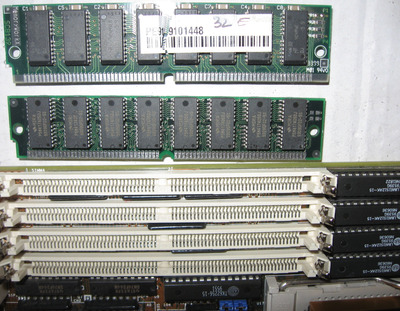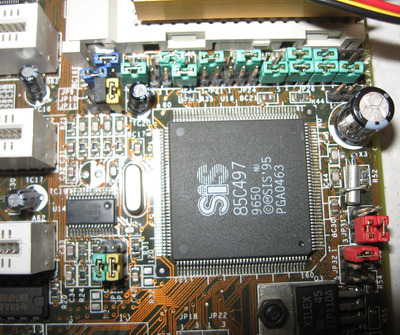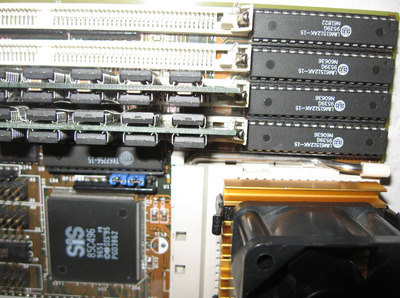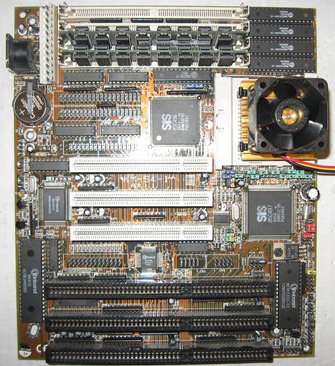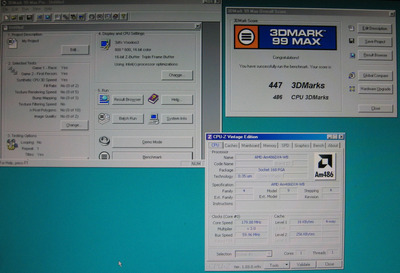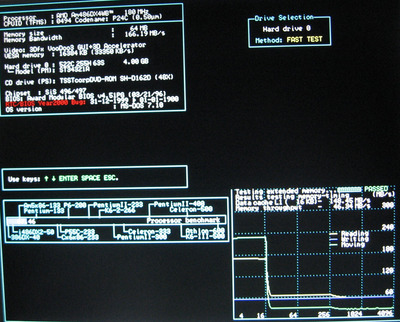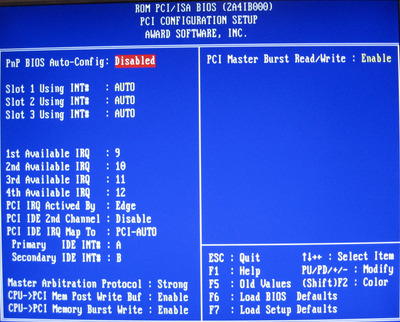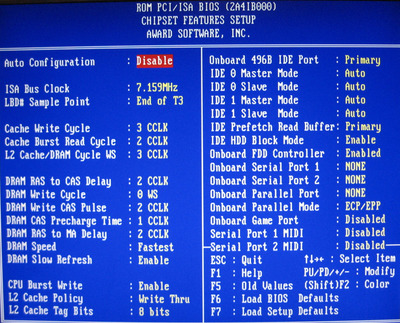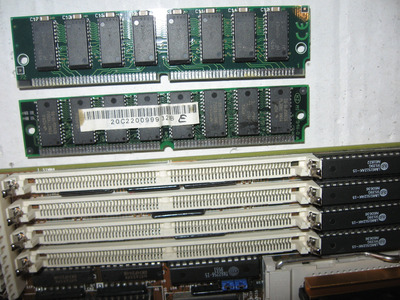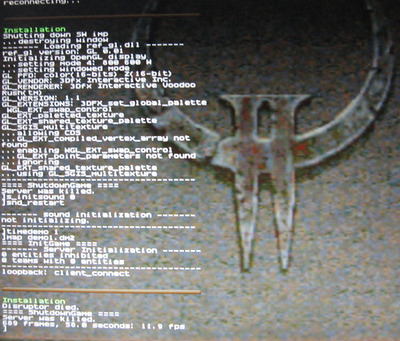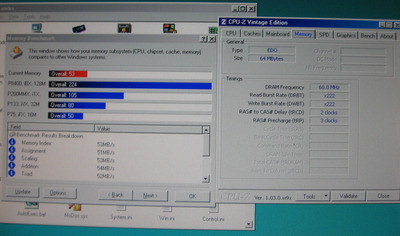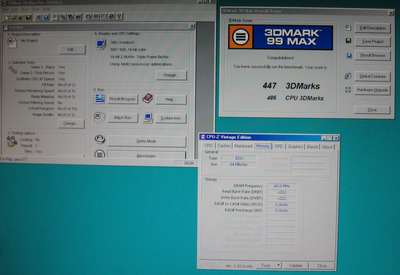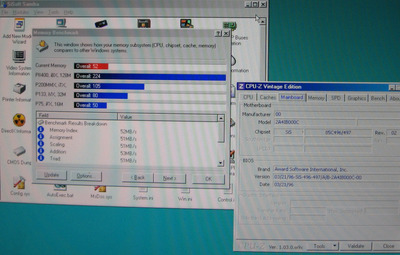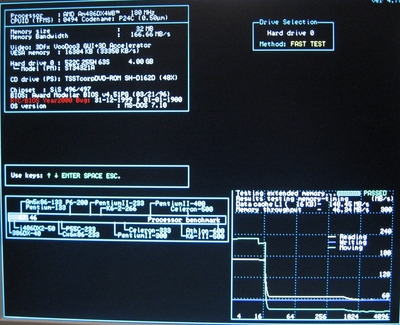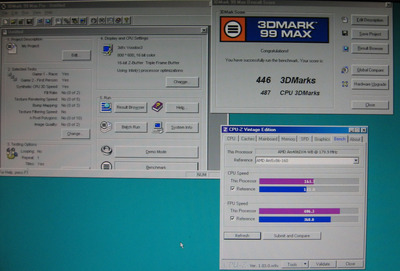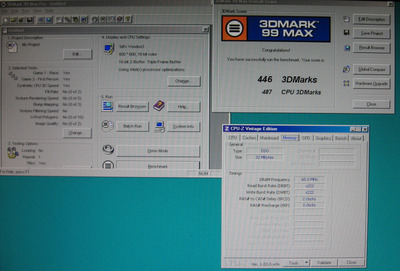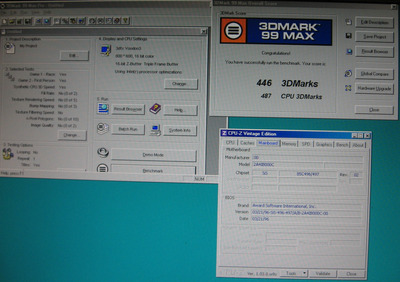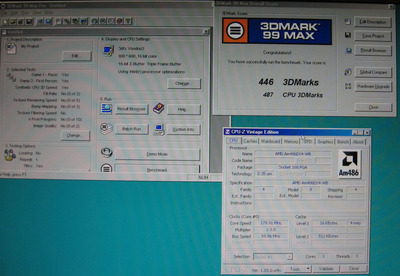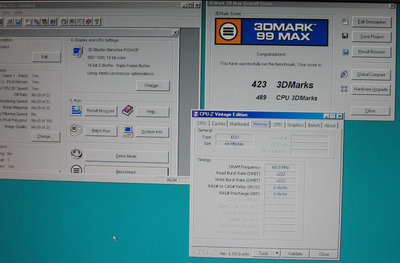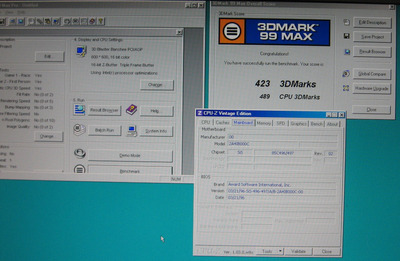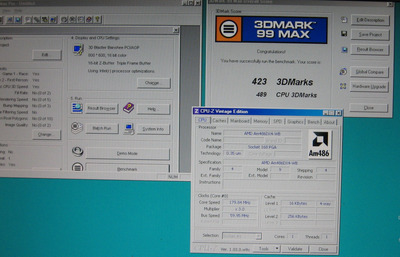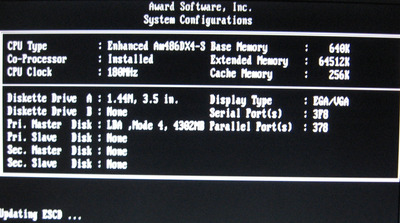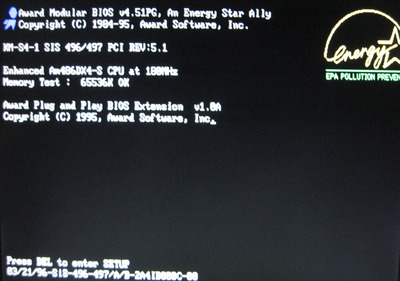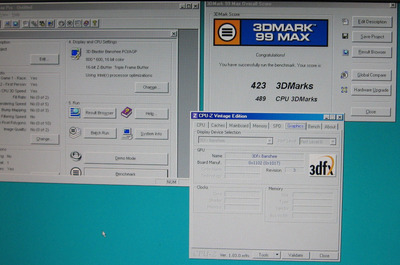In the last few days, another "little wonder" happens 😀
Testing another 486-board with a SiS496/497-chipset, there was possible to reach a stable system at 60-MHz-FSB, wich results in an AMD DX5-180 MHz, too 😀
It's good I have another CPU working stable at 180 MHz at 4,0 Volt (provided by the board) 😉
The board is a KM-S4-1 (Kaimai) Rev.1.1, but I found other names of it,too, like Azza 4SIG / Rectron RT-4s3 / Jetway J-446 / ATC-Unitron U6923.
BTW, my board is a very new/late one, as its chipsets are produced at about Christmas 1996! Few months later, the Pentium II was on the market 😉
As there is no information on the web about the 60-MHz-FSB, I played a little bit with the jumpers and finally this setting works:
On JP11, close pins 2-3 AND 4-5 . JP 12 must be closed to 2-3 (this sets PCI:FSB = 1:2).
Exactly like the Zida Tomato 4DPS (shown above) with the same chipset, this board works always with L2 dirty bit enabled, and it's only really stable at BIOS-settings "L2 Cache Policy = WT" and "L2 Cache Tag Bits = 8 bits".
So, all scores for 3DMARK99MAX under Win98Se are at 99 % equal (and equal to the ZIDA-board, too), regardless of using 32 or 64 MB of RAM, and regardless of using 256 or 512 KB L2 (so I finally choose the 256-KB-option, to spare my few ISSY-IS61C1024-modules).
Using the same V3-2000-VGA like with the ZIDA-board, a Sample-Point-setting of T2 in BIOS is possible. But, sadly, this does not have any effect of the 3DMARK-score...Not sure, but maybe this option does not work properly on this board, regardless of T2 or T3.
In GLQuake, the system reaches 11,9 FPS at 800x600 dpi.
Other results in DOS are:
-> Quake: 19,0 FPS
-> Doom: 68,14 (1096 realtics; no sound)
-> 3d bench 1.0c: 91,6
-> PCP-bench (vga-mode): 26,7
Also, this board supports EDO-RAM (I use for all tests). But, except of a higher RAM-bandwith in speedsys and Sandra 98, as well as a faster Windows-boot, all other test-scores are very close or equal to the ZIDA-board (it works only with FPM-RAM at some slower RAM-settings in BIOS).
As the board accepts a maximum size of 32 MB per RAM-slot, for 64 MB two modules must be used. This works perfectly at 60-MHz-FSB, and at very fast RAM-settings in the BIOS, too (two pieces of 50ns are used).
The manual for this board can be found here: https://theretroweb.com/motherboards/s/rectro … t-4s3#downloads.
In this manual, at least for my board-model, the jumper-settings for using of 256 KB L2 are wrong.
Using them, the system was very unstable, or it refuses to boot from any device, too.
Looking forward on the web, I found some pictures of the board using 256 KB L2, with other jumper-settings -> using them, the system works perfectly!
Here they are: JP7 -> 2-3 closed; JP8 -> 1-2 closed.
Exactly like the ZIDA-board, no COM-mouse can be used, even the COM-controller appears correctly in the device-manager (so the external CA9312-ISA-controller is used again).
Fortunately, my board has the (probably) newest BIOS for this model, so here is a copy of it 😀
